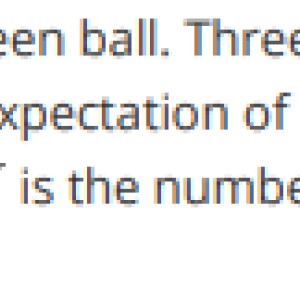foundations in probability
Answer
Answers can only be viewed under the following conditions:
- The questioner was satisfied with and accepted the answer, or
- The answer was evaluated as being 100% correct by the judge.
277
The answer is accepted.
Join Matchmaticians Affiliate Marketing
Program to earn up to a 50% commission on every question that your affiliated users ask or answer.
- answered
- 1129 views
- $10.00
Related Questions
- Statistics- Probability, Hypotheses , Standard Error
- Probability - what is the probability that a given tire length will lie in a lenght of interest
- Existence of a Non-negative Integrable Random Variable with Supremum-Constrained Survival Function
- Probability/Outcome
- Estimating the Suit with 12 Cards: MLE and Confidence Intervals in a Figgie Starting Hand
- Exponential Probability
- Finding the probability that a roughly normal distributed will have the highest value among multiple curves
- Joint PDF evaluated over a curve $P_{U,V}$



hello schwartstack, can you check my other questions too, they are similar
hello schwartstack, can you check my other questions, they are similar